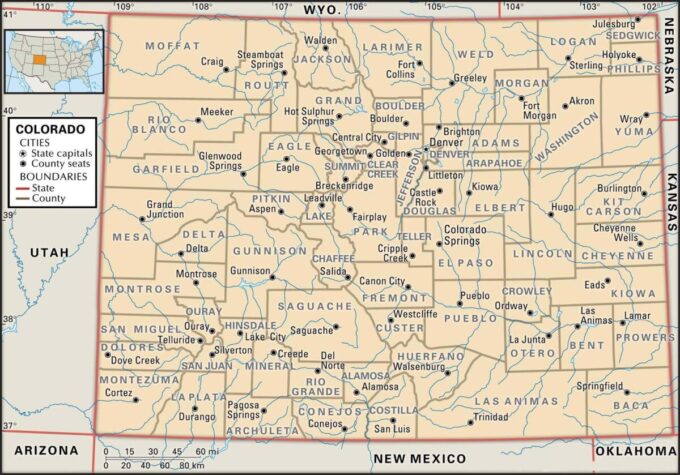Understanding Colorado’s Diverse Building Jurisdictions and the Impact on Construction and Affordable Housing
Colorado’s regulatory landscape is complex and varies widely from one jurisdiction to another. As a home rule state, Colorado grants its towns, cities, and counties the authority to manage their own planning, zoning, and building regulations, creating over 300 unique jurisdictions. This diversity impacts developers, architects, builders, and anyone involved in building projects across the state. Understanding Colorado’s Diverse Building Jurisdictions is critical to success for Architects, Engineers, Developers, and Contractors who work statewide.

Colorado’s Building Jurisdictions
Colorado comprises 64 counties, of which approximately 60% are unincorporated areas without the governmental structure of a city or town. Additionally, Colorado has 272 incorporated cities and towns, each with varying regulatory frameworks for planning and building departments. That’s 336 independent jurisdictions to work within! Each jurisdiction, whether a city, town, or county, enforces its own version of land use and building codes, impacting everything from land development to construction practices. As a home rule state, Colorado allows local governments to make independent decisions regarding building codes and land use, giving each jurisdiction control over how development occurs within its borders.
What It Means to Be a Home Rule State
In Colorado, the “home rule” provision means that local jurisdictions have control over regulations rather than defaulting to state-wide codes. Home rule status allows municipalities to tailor building codes, land-use regulations, and ordinances to meet their community’s specific needs and priorities. Consequently, this often results in diverse standards across counties and cities. For example, one county may strictly enforce International Building Code (IBC) regulations, while a neighboring town may adopt alternative amendments or entirely different standards.
This framework allows flexibility but also adds complexity for designers and builders who must navigate different regulations across locations. For instance, while Denver may prioritize dense urban housing developments, nearby counties may impose height restrictions, parking requirements, or setback rules that limit similar projects.
Variability in Code Adoption and Interpretation
Each jurisdiction in Colorado adopts building codes independently, leading to significant variations. Some adopt the latest version of the International Building Code (IBC), while others adhere to older versions or implement specific amendments suited to local conditions. Jurisdictions may also interpret the same codes differently, leading to inconsistencies in enforcement and creating challenges for developers.
For example, building code ambiguities—such as acceptable standards for fire safety, accessibility, and energy efficiency—can be interpreted in multiple ways. In one jurisdiction, a certain type of fire-rated material might meet code requirements, while a neighboring jurisdiction might reject it based on a different interpretation. This lack of uniformity complicates project planning, requiring developers to adapt designs and construction practices for each location. Additionally, even minor amendments across jurisdictions can affect how projects are designed and built, from structural standards to electrical wiring.
Impact on Statewide Development and Standardization
The wide variation in building codes makes it difficult for developers to standardize building designs across Colorado. For projects that span multiple jurisdictions, this can lead to increased project costs, delays, and a need for site-specific modifications. Each change not only increases material and labor expenses but also requires additional coordination and communication with local authorities.
This regulatory inconsistency particularly hinders offsite or modular construction, where standardized building components are manufactured in one location and then transported to the site for assembly. Offsite construction relies on predictable, uniform code requirements, which are often challenging to meet when different jurisdictions enforce unique regulations. As a result, modular builders face challenges when trying to scale affordable housing solutions, as components must be customized for each project’s location. These adjustments increase costs, slowing the pace at which modular construction can address the affordable housing crisis in Colorado.
The Impact on Affordable Housing
Consider a modular affordable housing project planned across multiple Colorado jurisdictions. In theory, modular construction could provide high-quality, low-cost housing at a faster rate than traditional building methods. However, due to Colorado’s fragmented regulatory environment, builders must adapt each unit to meet specific codes, from energy efficiency to accessibility standards, in each jurisdiction. For instance, fire safety codes may require different sprinkler systems in each county, resulting in added costs and extensive design revisions.
These jurisdictional differences can turn a streamlined project into a complicated one, driving up costs and elongating timelines, reducing the cost savings modular construction typically provides. In some cases, these regulatory discrepancies may even halt projects entirely, as developers find it unfeasible to meet the demands of multiple building authorities.

Moving Forward
To address Colorado’s affordable housing needs and encourage innovative building methods like modular construction, stakeholders are advocating for greater standardization or alignment across jurisdictions. While full state-wide code alignment remains challenging due to the home rule provision, some jurisdictions are working together to develop more consistent regional standards, benefiting developers and Colorado residents alike.
References
- Colorado Department of Local Affairs. (n.d.). Division of Housing
- National Fire Protection Association. (2021). Building Code Adoption Across the United States
- Modular Building Institute. (2023). The Benefits and Challenges of Modular Construction










